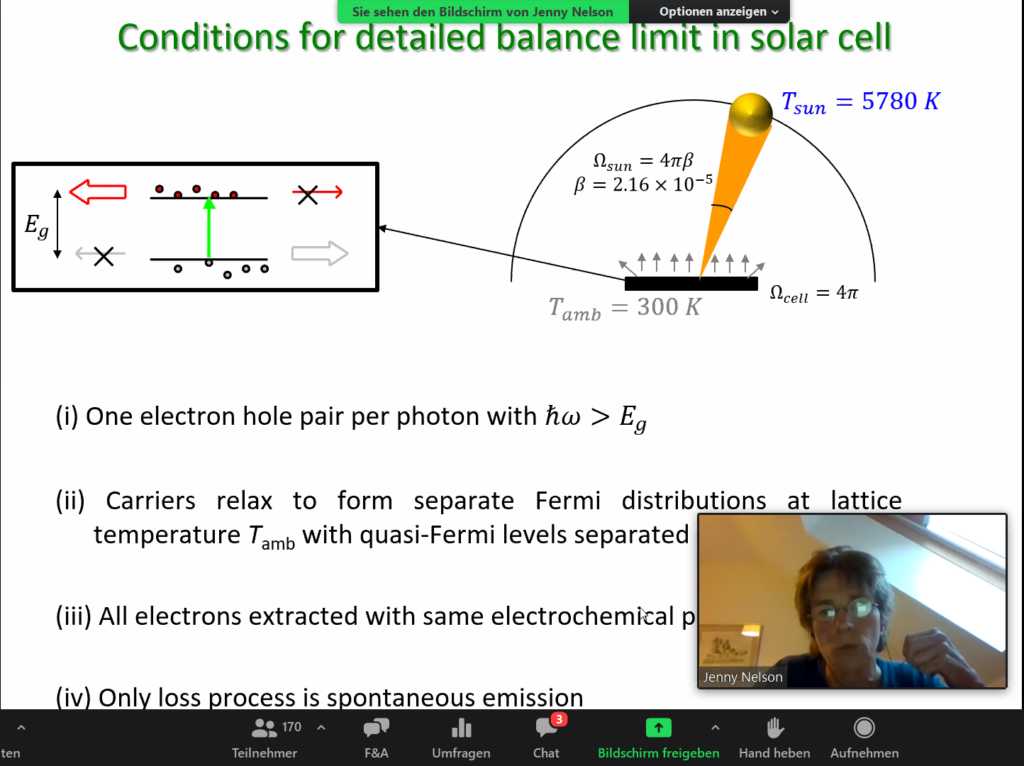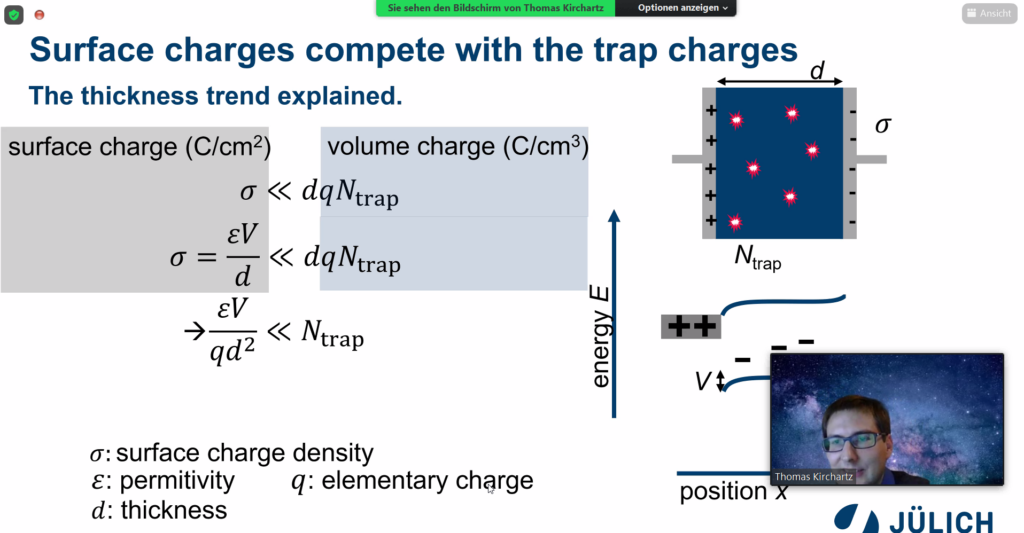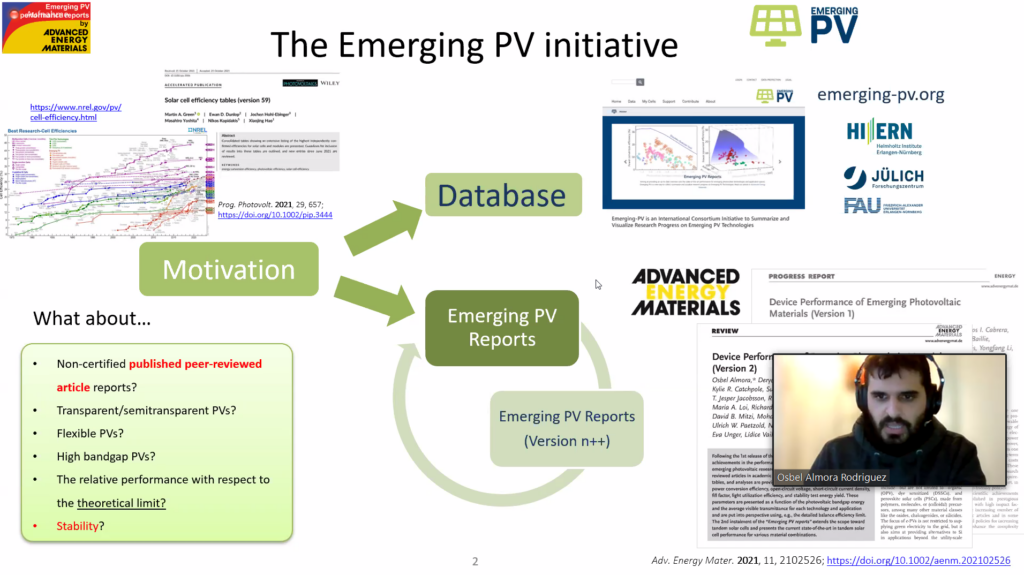The NGSE gets off to a great start with session 1!
To kick off the NGSE6 Prof. Brabec greets the over 170 participants for the starting sesstion. The topic of the NGSE6 are „Concepts to break the Detailed-Balance limit“. As Silicon approaches this limit in the laboratory and in practical applications of solar cells new concepts are needed that allow for Photovoltaics to go beyond these limits. The NGSE6 this year wants to be a forum for discussing concepts to do this. To do this a program with 18 Speakers has been put together with 4 Tutorials and 14 invited talks on Detailed-balance Limit and Fundamentals, Multiple Exciton Generation, Up and Down Conversion, Singlet Fission, Hot Electron Capture and Emerging Concepts.

The first session started with a Tutorial by Prof. Jenny Nelson from Imperial College of London titled „Detailed balance principle and the limits to efficiency of organic solar cells“. Prof. Nelson first reviews the detailed balance limit and the source of losses in Photovoltaics before going on to an overview of the possible routes that are available in order to go beyond these limits, like „spectral modifications“ (e.g. up and down conversion) or multi charge carrier generation (Hot Electron capcture or singlet fission). In the last part of her presentation Prof. Nelson focusses on approaches to determine and circumvent efficiency limits in organic bulk heterojunction solar cells, where radiative and non-radiative decay processes impose an additional limitation on efficiency. For a full understanding more work is needed though.

Prof. Thomas Kirchartz from Forschungszentrum Jülich gets more into the details in the second presentation of the first session where he focusses on „Defect densities and charge carrier lifetimes in lead-halide perovskites“. In the first part of his talk Prof. Kirchartz focusses on defects on the surface and in the bulk and their effect on charge carrier lifetime. In the second part he compares Transient photovoltage measurements with transient photoluminescence. His investigations show that TPV lifetime is systematically much larger than the TPL lifetime which he explains with the competition of surface charges versus volume charges.

Dr. Osbel Almora updates the audience in the last presentation of the first session on the progress in champion laboratory cells. The results are collected in the Emerging PV Efficiency tables which were released in their second version recently in Advanced Energy Materials. Dr. Almora reviews the recent advances for the most important classes of solar cells. In its second version the tables were expanded to tandem solar cells. From his review of the data Dr. Almora finds that perovskites typically suffer from Fill Factor losses, while in tandems Voc losses dominate. Furthermore he sees interesting progress for semi-transparent PV, especially for DSSC, and criticizes that stability is still poorly decribed in many studies.

